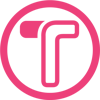Web Dev & Design for Urgent Care System
- Web Development
- $200,000 to $999,999
- June 2018 - Ongoing
"I can’t express how great of people they are to work with."
- Other industries
- Atlanta, Georgia
- 5,001-10,000 Employees
- Phone Interview
- Verified
Tandem redesigned a website with a focus on accessibility. This involved producing content and coding. Currently, they provide development support as needed.
Working with Tandem has felt like a true partnership. A supportive team, they offer transparent opinions, yet always accommodate stakeholder's requests. Despite initial issues, the team has improved at project management. Their accessibility is a strength.

